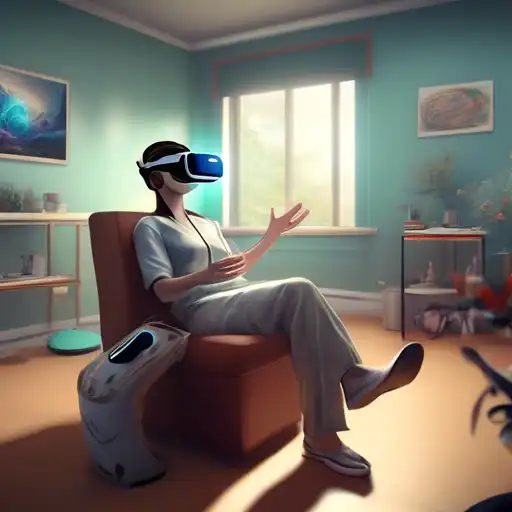The Transformative Role of Virtual Reality in Therapeutic Practices
Virtual Reality (VR) technology has transcended its initial entertainment-centric applications to become a groundbreaking tool in the field of therapy. By immersing patients in controlled, virtual environments, therapists are now able to treat a variety of psychological and physical conditions more effectively. This article explores the innovative ways VR is being utilized in therapeutic settings, offering new hope and improved outcomes for patients worldwide.
Understanding VR Therapy
VR therapy, also known as virtual reality exposure therapy (VRET), involves the use of VR technology to simulate real-world environments for therapeutic purposes. This method is particularly effective in treating phobias, anxiety disorders, and PTSD, allowing patients to confront their fears in a safe, controlled setting. The immersive nature of VR helps in creating realistic scenarios that can be tailored to each individual's therapeutic needs.
Applications of VR in Therapy
The applications of VR in therapy are vast and varied. Below are some of the key areas where VR is making a significant impact:
- Mental Health: VR is being used to treat conditions such as anxiety, depression, and PTSD. By simulating stressful situations, patients can learn coping mechanisms in a controlled environment.
- Physical Rehabilitation: Patients recovering from strokes or injuries use VR to regain motor skills through interactive games and exercises.
- Pain Management: VR has been shown to reduce pain perception by distracting patients during painful procedures or chronic pain episodes.
- Social Skills Training: Individuals with autism or social anxiety benefit from VR scenarios that simulate social interactions, helping them to practice and improve their social skills.
Benefits of VR Therapy
The benefits of incorporating VR into therapeutic practices are numerous. VR therapy is highly customizable, allowing therapists to adjust scenarios based on the patient's progress. It also provides a safe environment for patients to face their fears without real-world risks. Additionally, VR therapy can be more engaging and motivating for patients, leading to higher adherence to treatment plans.
Challenges and Future Directions
Despite its potential, VR therapy faces challenges such as high costs and the need for specialized equipment. However, as technology advances and becomes more accessible, these barriers are expected to diminish. The future of VR in therapy looks promising, with ongoing research exploring its use in treating a wider range of conditions and improving the quality of care.
In conclusion, VR is revolutionizing the field of therapy by offering innovative solutions to traditional treatment challenges. Its ability to create immersive, controlled environments opens up new possibilities for treating both mental and physical health conditions. As we continue to explore and expand its applications, VR therapy stands as a testament to the power of technology in transforming healthcare.
